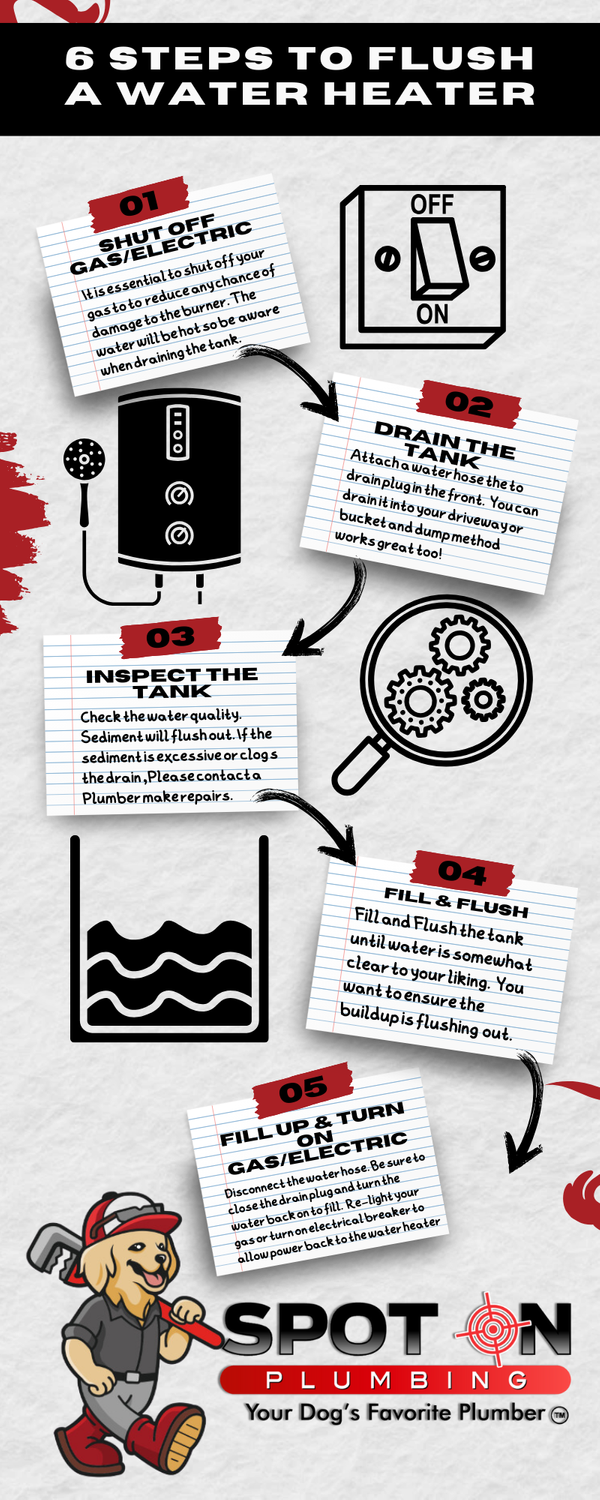Flushing your water heater is a simple maintenance task that can extend its life, improve efficiency, and save you money. Over time, sediment builds up inside the tank, reducing heating efficiency and potentially causing damage. Don’t worry, though—Spot On Plumbing Tulsa is here to help you take care of it yourself! Follow these five easy steps, and you’ll have your water heater running smoothly in no time.
Step 1: Shut Off the Gas/Electric Supply
Before you start, ensure your safety by turning off the power to your water heater. If you have a gas water heater, locate the gas valve and switch it to the "off" position. For an electric water heater, go to your electrical panel and flip the breaker labeled for your water heater. This prevents accidents and ensures your heater won’t overheat while you’re draining it.
Step 2: Drain the Tank
Next, you’ll need to drain the water from the tank. Start by turning off the water supply to the heater. Then, connect a garden hose to the drain valve located at the bottom of the tank. Run the hose to a safe drainage location, such as a floor drain or outside. Open the valve and let the water drain completely from the tank. Be careful—the water will be hot!
Step 3: Inspect the Tank
Once your tank is drained, it’s a great time to check for signs of wear and tear. Look for rust, corrosion, or any leaks around the tank or its fittings. Pay close attention to the anode rod, which helps prevent tank corrosion. If it's heavily corroded, consider replacing it. Spotting any issues now can help you avoid costly repairs later.
Step 4: Fill & Flush the Tank
Now that the tank is empty, it's time to flush out any remaining sediment. Turn the water supply back on and let the water run through the tank for a few minutes, keeping the drain valve open. This will help wash out any debris. Once the water runs clear, close the drain valve and let the tank fill up with water again.
Step 5: Fill Up & Turn On the Gas/Electric
Finally, once the tank is full, you can restore the power. For a gas water heater, turn the gas valve back to the "on" position and relight the pilot if necessary. For an electric water heater, go back to your electrical panel and flip the breaker to the "on" position. Afterward, check the temperature setting on your heater—it’s recommended to keep it around 120°F for optimal efficiency and safety.


